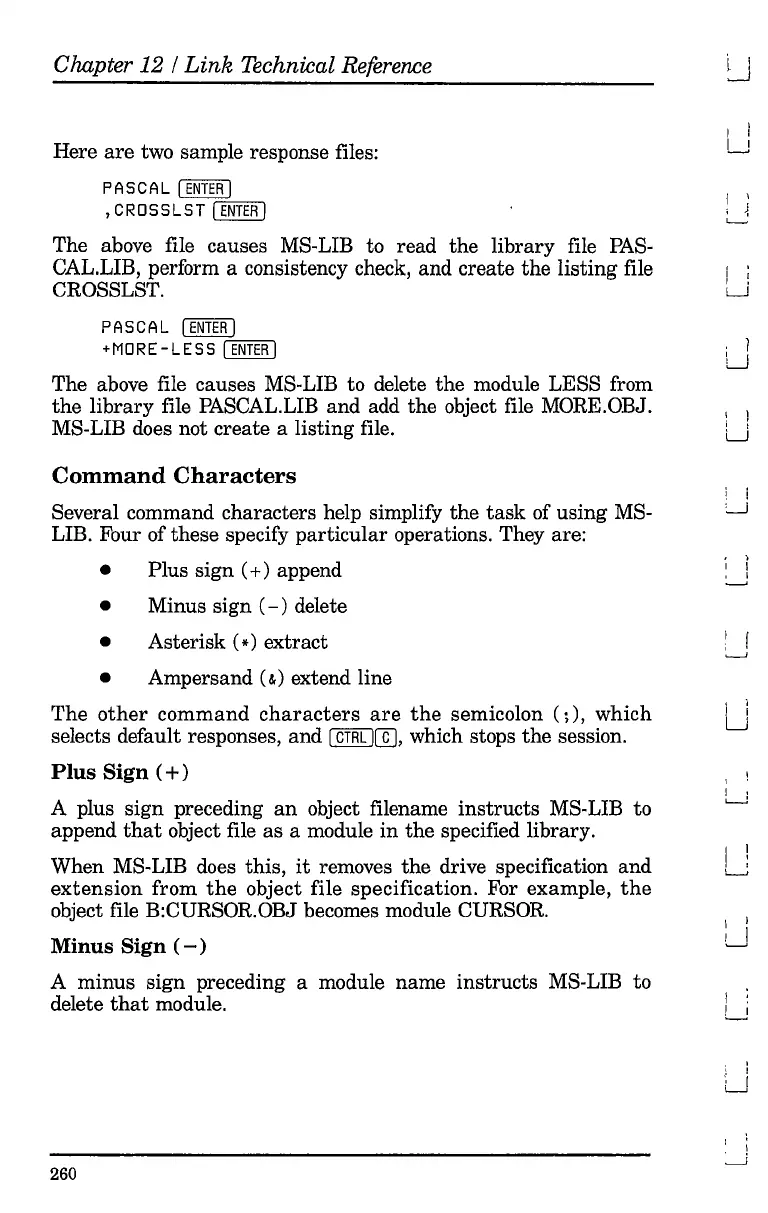Chapter
12
/
Link
Technical Reference
Here
are
two sample response files:
PASCAL I
ENTER
I
, CROSSLST I
ENTER
I
The above file causes MS-LIB to read the library file
PAS-
CAL.LIB, perform a consistency check, and create the listing file
CROSSLST.
PASCAL I
ENTER
I
+MORE-LESS I
ENTER
I
The above file causes MS-LIB to delete the module LESS from
the
library file PASCAL.LIB and add the object file MORE.OBJ.
MS-LIB does not create a listing file.
Command
Characters
I I
U
, .
I I
I ,
L.J
, ]
i I
l......J
I I
LJ
! I
Several command characters help simplify the
task
of using MS-
~
LIB. Four of these specify particular operations. They are:
•
•
•
Plus sign
(+)
append
Minus sign (
-)
delete
Asterisk
(*) extract
, \
I I
, I
~
I r
"--'
• Ampersand (&) extend line
The
other
command
characters
are
the
semicolon
(;),
which
selects default responses, and [
CTRL
I[]],
which stops
the
session.
Plus
Sign
(+)
A plus sign preceding
an
object filename instructs MS-LIB to
append
that
object file as a module
in
the specified library.
When MS-LIB does this,
it
removes
the
drive specification and
extension
from
the
object file specification. For example,
the
object file B:CURSOR.OBJ becomes module CURSOR.
Minus
Sign
(- )
A minus sign preceding a module name instructs MS-LIB to
delete
that
module.
260
I l
LJ
I ,
..........:
I !
L..J
I I
L.J
I :
U
: j
L..J
